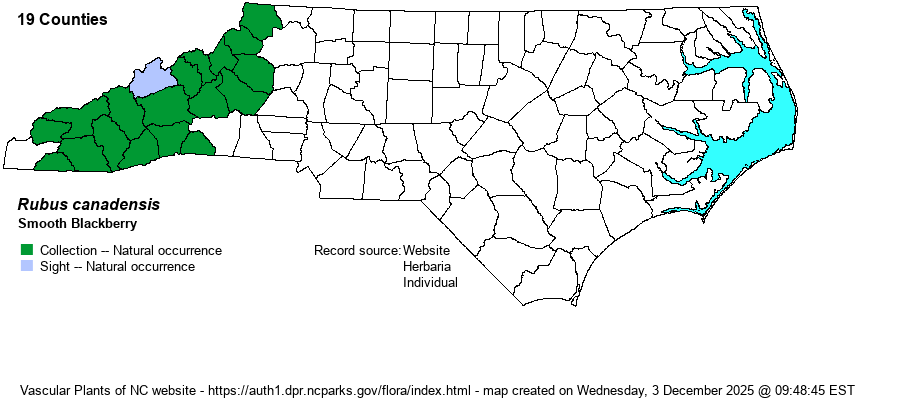| Author | L. | |
| Distribution | Throughout the Mountains; not occurring in the Piedmont except at high elevations close to the Blue Ridge.
This is a Northern species, as is R. allegheniensis,, but it has an even more northerly distribution, as south of Canada it ranges mainly just to the New England states, northern PA, central WI and central MN; then southward primarily in the mountains to northeastern GA.
| |
| Abundance | Common to locally abundant at quite high elevations, but less numerous at lower montane elevations. Not as common at mid-elevations as R. allegheniensis, but the most numerous blackberry on grass balds at the highest elevations. | |
| Habitat | This species is found on grass balds, thickets, open forests and woodlands, and other open or semi-open, cool habitats. It is a characteristic invading “woody” species of grass balds. | |
| Phenology | Flowers quite late for a blackberry, mainly in June and July; fruits in July and August. | |
| Identification | This is another deciduous blackberry with long arching stems and a height reaching to about 5-6 feet tall. As with other blackberries, it usually has five leaflets, which average a bit larger than on other species. However, it is easily identified by being nearly “unarmed” – it has few and weak prickles so as to appear without prickles. Walking through a stand of this species doesn’t rip skin or pants with the strong prickles of similar species! | |
| Taxonomic Comments | None
| |
| Other Common Name(s) | Thornless Blackberry, Mountain Blackberry, Canadian Blackberry | |
| State Rank | S3? [S3S4] | |
| Global Rank | G5 | |
| State Status | | |
| US Status | | |
| USACE-agcp | | |
| USACE-emp | | |

